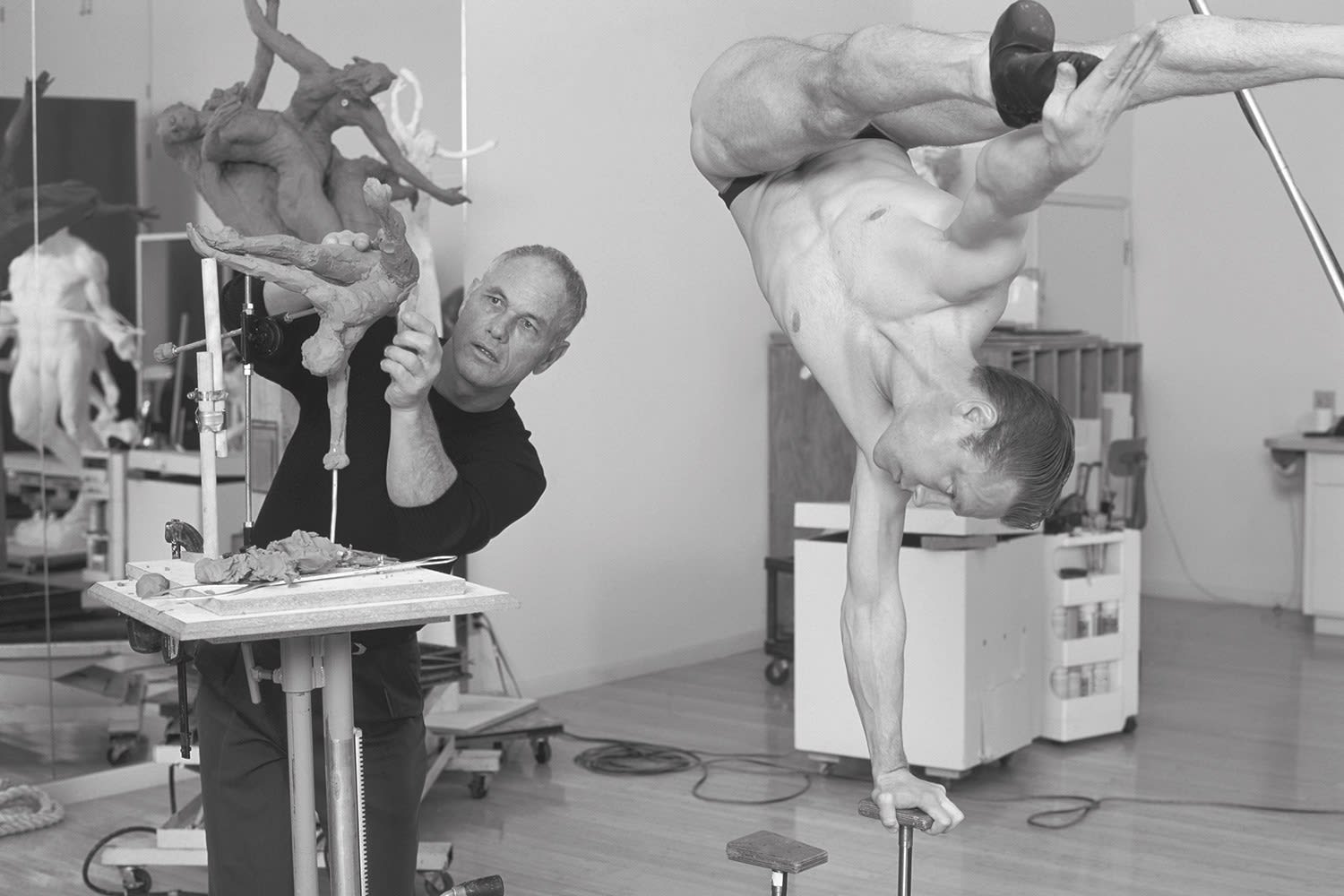Richard MacDonald American, b. 1946
Caruso Triptych is one of the most challenging and innovative pieces Richard MacDonald has ever executed – and for an artist always seeking the next challenge, that is a statement of some significance. In an edition of 8this piece is a spectacular triumph of the artist’s imagination. Acclaimed Russian Cirque performer, Oleg Izossimov, assumes the character of Caruso, and is known for the understated elegance of his performance style, however, this work of art is vastly more than a mere representation of Oleg’s stage performance.
We all know that great artistry reaches a point where it seems perfectly natural – the singer, the actor, the dancer – can all reach a level of accomplishment where the viewer is so beguiled by the created illusion that the art seems to drop from the heavens fully formed. Caruso Triptych flows from Richard MacDonald’s imagination: sparked by a performance, but not an echo of that performance.
The precision and kinetic balance of the circles and bars that support the movement of the figures. The three sculpted figures read as one, as our eye follows the movement. For the artist it is best described by a musical analogy “a sequence of notes, combined to create a melody”.
- X
- Tumblr




